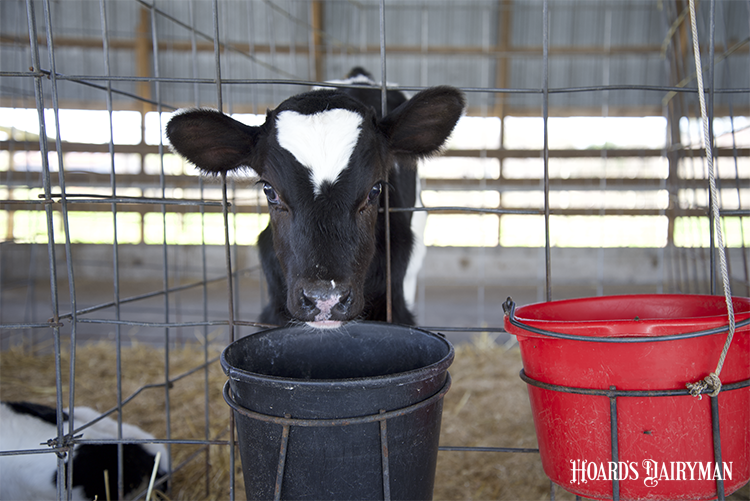
Preventing disease is kind of like balancing a seesaw. On one side is limiting an animal’s exposure to factors that might cause it illness, whether that is sick herdmates or environmental shortfalls that challenge the immune system. On the other side is providing resistance that can help it fight off pathogens if and when it becomes exposed.
If resistance is strong, it can overcome exposure to keep the balance. But when exposure overpowers resistance, the seesaw tips into disease. The need for this balance is especially true for keeping calves healthy, said Penn State extension veterinarian Hayley Springer.
Housing environment is a critical piece of managing a calf’s disease exposure and reducing that challenge, continued agricultural engineer John Tyson in the extension webinar. In addition to appropriate ventilation, he discussed some best practices for both individual and group housing setups.
For individual pens, he explained that 32 square feet is the minimum requirement recommended per calf. However, more is preferred to help keep adequate clean resting space available for the calf. When pens are shortened, there is less of a differentiation between the front of the pen, which is often dirtier, and the back, which ideally stays cleaner to allow the calf to comfortably lie down. Tyson has seen more and more farms providing 40 to 50 square feet per calf hutch or pen.
For group housing systems, provide at least 40 square feet per head, Tyson said. This does not include the feeding and watering areas. He advised dedicating a 6-to-8-foot-wide area with confident footing and a drain for feeding. A drain will help your ventilation system in removing moisture from the barn, Tyson noted. Also, locate waterers away from grain feeding areas to keep them cleaner.
While good airflow is necessary in calf pens and barns to remove contaminants and provide some cooling, both individual and group housing must avoid becoming drafty. “A draft in the winter is a cool breeze in the summer,” Tyson reminded.
In individual housing systems, he said that wire pens provide little protection from drafts. At least part of an individual pen should be a solid wall. This allows the calf to lay next to it to protect itself from drafts. Lying near something solid is also a natural instinct for calves as prey animals, Tyson explained.
That approach is also true in group housing, which may be more prone to drafts because there are fewer walls. He recommended that pen dividers be 48 to 54 inches high with at least some solid material at the bottom. This may even be achieved by lining up straw bales to give them something to lay against.
To keep young calves warm, Tyson reminded that while sawdust does a good job of moisture control, straw should be added to calf pens in colder weather to give them something to nestle into. Calf jackets also help them retain body heat.
While farms might not be able to prevent vulnerable young calves from being exposed to every potential pathogen, we can reduce those opportunities. Providing adequate space to keep calves clean and limiting cold in both individual and group housing are two ways to keep the seesaw of disease balanced and make sure exposure doesn’t overwhelm the calf’s ability to resist the challenge.








